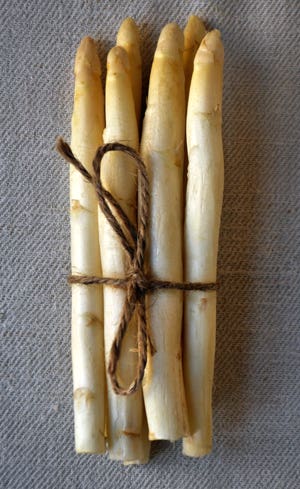
White Asparagus
White asparagus is grown under mounds of earth, hidden from sunlight, and therefore doesn't produce the chlorophyll that gives green asparagus its color and grassy flavor. Until recently, white asparagus was hard to find in the United States, but now it is both imported from Europe and grown domestically from March through early May.
The flavor of white asparagus is similar to that of green asparagus but milder; some people compare it to the taste of hearts of palm. Unlike the green version, white asparagus is best when boiled until completely tender. Traditionally, white asparagus is cooked upright in a tall, narrow asparagus pot; if you don't have such a pot, tie the spears in a bundle to ensure that the delicate tops remain out of the water and won't overcook before the stalks have softened. In France and Germany, white asparagus is typically served along with slices of ham and ramekins of vinaigrette, mayonnaise, and hollandaise for dipping.
Featured White Asparagus Recipes
Tips
- Look for shiny, firm spears without wrinkles or ridges, and check the cut end to make sure it's not dry.
- White asparagus should be used as soon as possible after purchase; the produce expert Elizabeth Schneider recommends that you trim the base of the stems and store the asparagus in the refrigerator standing upright in an inch of water for no more than a day.
- Depending on how fibrous the stalks are, trim an inch or two off the bottom of each spear.
- Because the skin of white asparagus is bitter and fibrous, be sure to peel it off completely before cooking. The spears are brittle and can easily snap during peeling if held in the hand, so lay each spear flat on a work surface to peel.
Where to Buy
Every year, more American supermarkets and farmers' markets carry white asparagus.
Keep Reading
Continue to Next Story










